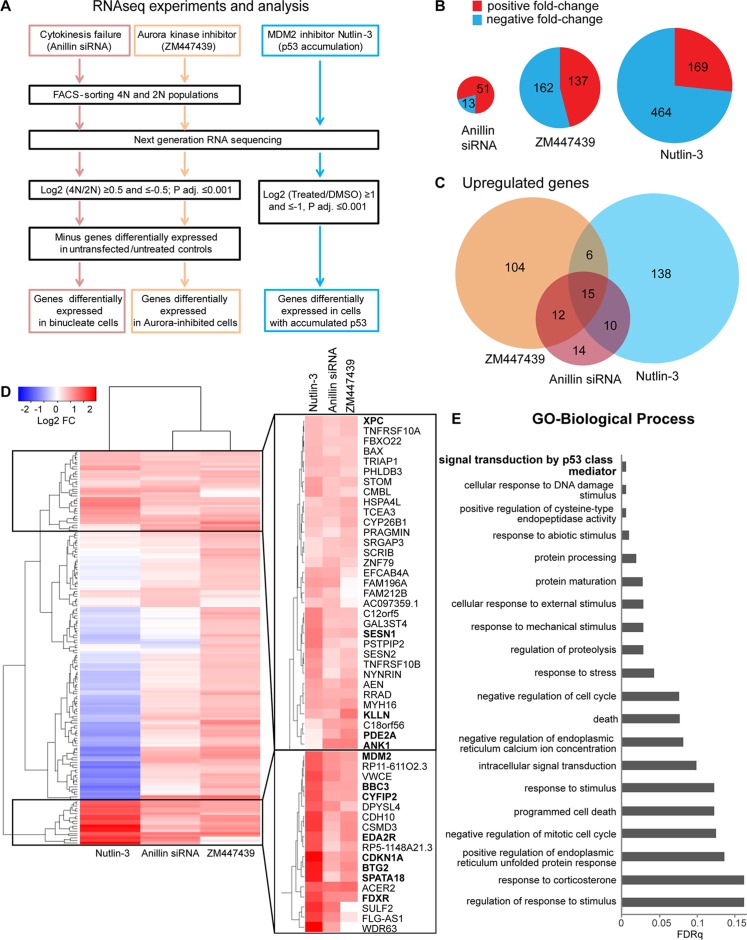FIGURE 1:
Transcriptome analysis of acute tetraploid cells and diploid p53-accumulated cells by RNAseq. (A) RNAseq experimental setup and analysis. Tetraploid Aurora-inhibited RPE1 cells were obtained by treatment with Aurora kinase inhibitor ZM447439 for 24 h, tetraploid binucleate RPE1 cells were obtained by siRNA-mediated knockdown of the essential cytokinesis regulator anillin for 24 h, and p53- activated cells were obtained by treatment of RPE1 cells with 2.5 μM nutlin-3 for 24 h. (B) Total number of differentially expressed genes. Red, positive fold change; blue, negative fold change. Only genes with log2 average reads per kilobase per million reads (RPKM) expression values >0 are included. Size of pie charts is proportional to total number of differentially expressed genes. (C) Venn diagram depicting genes up-regulated in tetraploid cells treated with Aurora inhibitor (orange) or anillin siRNA (maroon) and diploid cells treated with nutlin-3 (blue). Only genes with log2 average RPKM expression values >0 are included. (D) Hierarchical clustering of all genes up-regulated in tetraploid ZM447439-treated cells and all genes up-regulated in tetraploid anillin siRNA–treated binucleate cells based on 4N/2N fold change (log2 FC ≥ 0.5, p adjusted 0.001). Only genes with log2 average RPKM expression values >0 are included. For cells exposed to nutlin-3, FC is ratio of nutlin-3 over DMSO-treated cells. White, no change; red, up-regulated genes; blue, down-regulated genes. Two clusters of commonly up-regulated genes are expanded. Bold indicates genes chosen for subsequent validation. (E) Enriched biological process GO terms of selected clusters determined using the Gene Ontology Enrichment Analysis and Visualization tool (www.biomedcentral.com/1471-2105/10/48) and ranked by false discovery rate q value. Nonredundant GO terms were identified using REVIGO (journals.plos.org/plosone/article?id=10.1371/journal.pone.0021800). Top 20 nonredundant GO terms.

